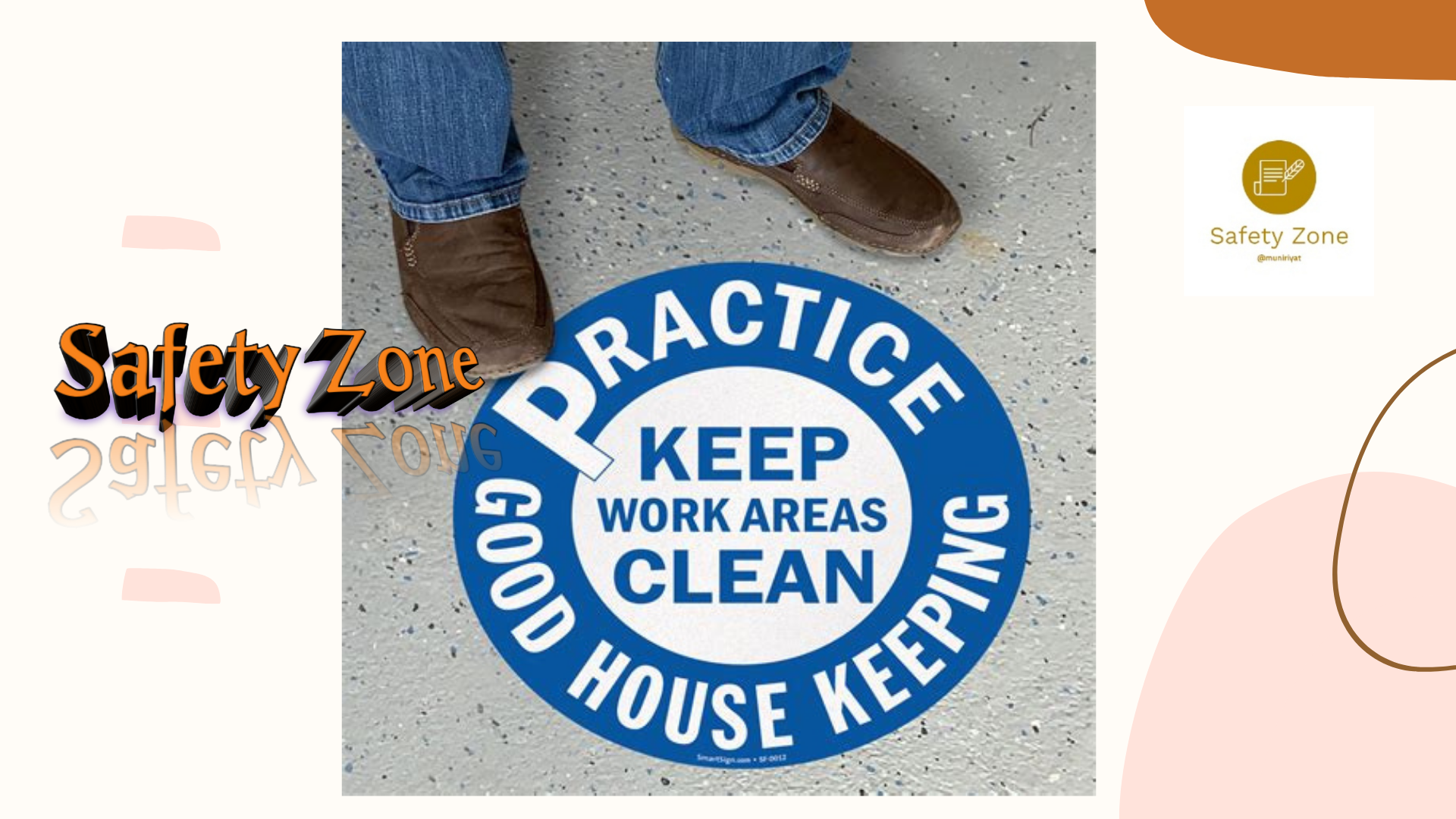Housekeeping workplace safety. The employee must have as a rule the maintenance of his area clean and tidy. Lack of proper housekeeping at the site is a safety risk common to all construction projects. Good housekeeping is one element that can help improve not only workplace safety but also worker morale and productivity.
A good cleaning can have a significant impact on others. And makes it easier for everyone to carry out their work safely. Each of us to keep our workplace clean and orderly to make the entire site a safer place to work.
Housekeeping is everyone’s job whether worker, foreman or supervisor. It should be on an ongoing basis.
Construction sites can be very busy and hectic, with many workers and multiple contractors carrying out different simultaneous activities. So it is necessary to know "Housekeeping workplace safety"
What if none of those groups did their cleaning duties? The dirt and debris would accumulate into a dangerous obstacle course. Imagine how difficult it would be to navigate a site like that. How would you avoid falling or accidentally dropping materials around the workplace?
How will you find your tools and tackles if they were covered by waste from other workers? A cluttered and uncleaned construction site is not a productive or safe work environment.
May you like
Although the overall safety of a construction site is ultimately the responsibility of the supervisor. who must maintain the site safety plan and communicate the information?
Also, each worker on the site is responsible. Each worker is responsible for knowing and obeying the safety plan. Practising good housekeeping.
Complying with recommended work practices, and immediately reporting and/or correcting hazards on the job site.
How do you maintain good housekeeping in the workplace?
If you are a worker on a construction site. You must do your part to keep the site free of clutter and debris that could cause injury or accidents.
Try to limit the number of materials and chemicals present on the site to only what you will need. As you go about your daily tasks, place trash in the appropriate containers located throughout the job site.
Quickly remove combustible materials, such as wood and paper, from the site. Keep formwork and pieces of wood with protruding nails away from job sites, walkways, and stairs. Drive out or bend overhangs before disposing of or storing boards.
Keep all storage areas, material collection and work areas clear of obstruction. As well as all stairways and walkways should be clear of debris. Store tools and materials in an orderly manner, away from traffic areas, in drawers or closets.
And keep flammable or hazardous waste in separate, covered containers. Make sure all materials stored on ceilings or high places are secure. There are waste hoppers, which are a safe way to remove materials from elevated job sites.
Keep an eye on the area where materials may fall. And post signs at the job site requiring the use of safety helmets and warning against debris that may fall.
Post guards around areas where workers may fall or be in danger by sharp objects. Control muddy areas using fill, gravel, boards or plywood, or other means.
You can do your part to housekeeping workplace safety for the well-being of yourself and your coworkers. You just have to observe order and cleanliness in the course of work and at the end of each shift.
The first rule is to carry out your work carefully, then start housekeeping. Good housekeeping before and after work prevents injury and saves time and prevents tool and property damage and loss.
Housekeeping guidelines workplace
- If you see a mess, clean it up. Don’t wait for someone else to clean before someone is injured.
- Keep all waste in neat piles and away from the work area.
- Do not allow garbage and debris to accumulate. Take him out of work regularly (daily basis).
- Keep walkways, and stairs clear.
- Store materials properly and only in designated areas.
- Keep tools and equipment stored neatly.
- Extension cords, hoses, etc. Move them when not in use.
- Keep extension cords or hoses from crossing driveways. If necessary, run the above.
- Keep emergency exits clear of obstructions.
A good cleaning will prevent minor injuries such as cuts and punctures. Prevent serious accidents like slips, trips, falls, and fires and increase labour productivity by accelerating the movement of workers and materials at work.
Presenter Tips
Pre-reading the Discussion Toolbox. Your comfort and confidence level will be higher if you know your subject.
For details on housekeeping visit: Safety Zone
Discuss the related tasks, work areas, or events that make the Discussion Toolbox relevant to your workplace. Involve workers through questions and input that leads to discussion.
Question:
Who is responsible for housekeeping?
Recommendation:
Better for the organization to hire a cleaning company that is dedicated to cleaning offices and the rest of the facilities of the company. It is considered a support to the worker, a way to complete and deepen the cleaning work that the employee performs daily.
Related toolbox topic: slip, trip and fall safety




